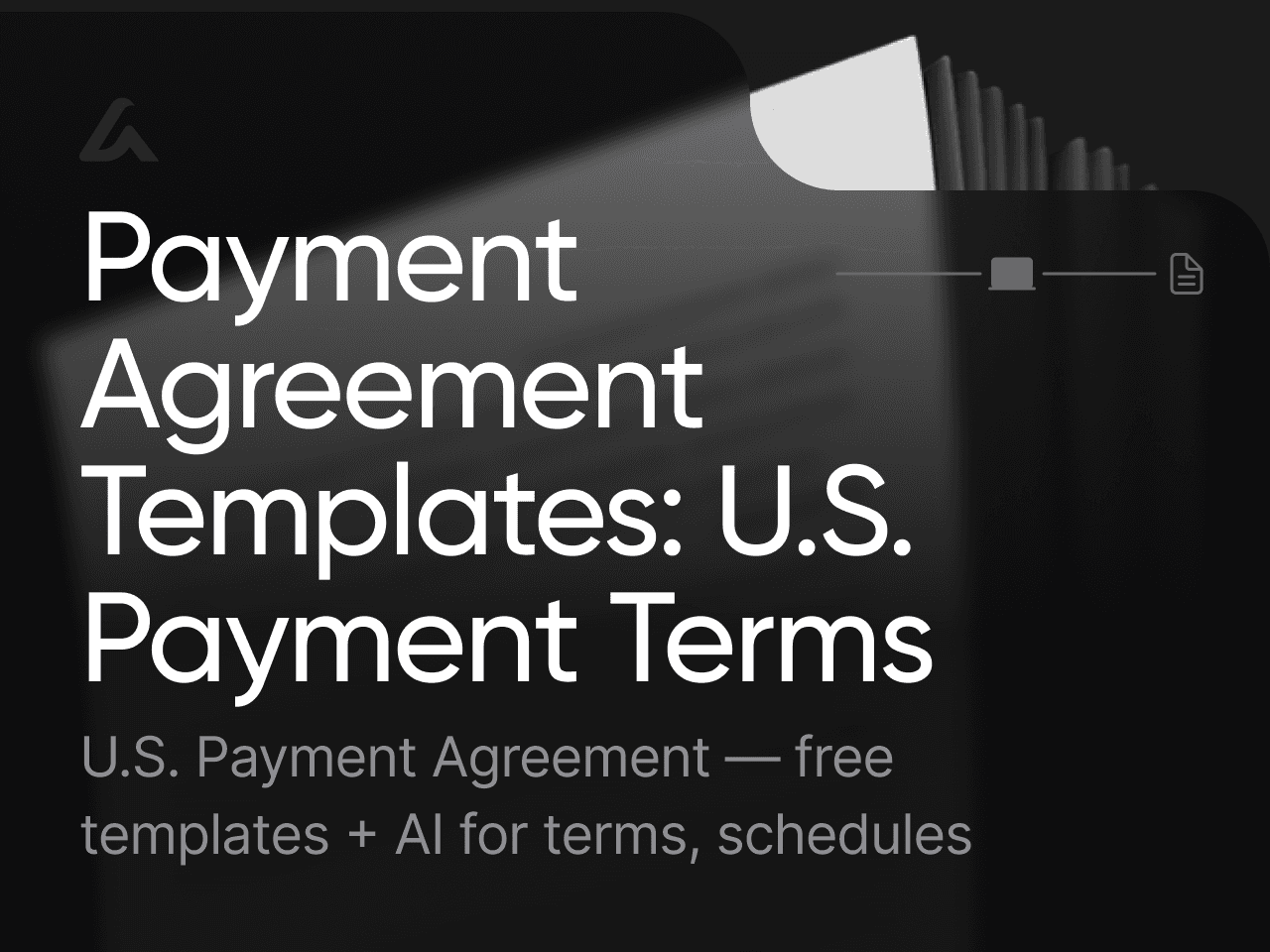AI Lawyer Blog
Client Agreement Template: Free Download for 2025 Success

Greg Mitchell | Legal consultant at AI Lawyer
3
Let’s get real, you can deliver flawless work, knock deadlines out of the park, and still get stiffed by clients who “forget” to pay or decide to shift the goalposts mid-project. If you don’t have a proper client agreement in place, you’re not just exposed you’re actually inviting problems. It’s about protecting your business, your income, and your sanity.
For a more comprehensive understanding of Client Agreements — including their legal nuances, variations across jurisdictions, and practical applications — we invite you to explore our in-depth overview article dedicated to this document category.
You Might Also Like:
What is a Client Agreement (and Why Should You Care)?
A Client Agreement is a legally binding contract between you and your client. It spells out the scope, deliverables, timelines, payment terms, confidentiality, dispute resolution, and more. These agreements are your business insurance policy, wrapped in a digital document.
And the good news? You don’t have to start from scratch.
Download your free client agreement template now
Customize it instantly with AI-powered tools
Why You Need a Client Agreement in 2025
Business is booming. So are disputes.
In 2025, we’ve got:
More freelancers than ever before
AI-fueled project turnarounds
Clients from different time zones, laws, and expectations
And while that growth is exciting, it also means the margins for errors are spiking as well.
Without a contract in place, you risk:
Scope creep turning a $1,000 project into unpaid overtime
Late payments turning into no payments
Legal disputes draining time, energy, and cash
When Should You Use a Client Agreement?
Every time you are onboarding a client or starting a new project with existing client.
So, here are few cases but not limited to, if you are:
A freelancer on Upwork
A consultant landing high-ticket retainers
A designer doing one-off logos
An agency onboarding a new retainer client
Pro Tip: Don’t let “quick projects” slide. Those are the ones that turn into scope creep monsters.
Legal Importance and Context
Written Agreements Are Legally Required (Sometimes)
In some professions (like law, finance, healthcare), a written agreement isn’t optional it’s required by law to protect both parties.
Data Privacy & Confidentiality Clauses
In a world of GDPR, CCPA, and AI-driven data exchange, you must protect client info. Add a strong confidentiality clause and outline how you handle data.
Dispute Resolution
Set the process upfront so everyone knows how disputes are handled before there’s a problem.
Federal & State Compliance
Rules vary by state. What’s legal in New York might not fly in California. Make sure your agreement reflects your local and federal obligations.
Want AI to handle this part? Use our tool to customize your template based on your profession and location.
What to Include in a Client Agreement (Checklist)
Here’s your must-have contract structure:
Section | Why It Matters |
Names + Contact Info | Lock in legal identities — no ambiguity |
Scope of Work | Set expectations and kill scope creep before it starts |
Payment Terms | When, how much, and how you get paid |
Termination Clause | What happens if someone wants out |
Confidentiality | Protect trade secrets and sensitive info |
Dispute Resolution | Keep legal battles out of court |
Signatures | You guessed it — no signature = no contract |
Bonus: Our free to Download Client Agreement template includes all of this, pre-filled and AI-editable.
How to Use Your Client Agreement?
Having an agreement is not enough, be very transparent and gain trust to your clients.
Here’s how:
Walk through it with clients show you’re transparent and professional
Use e-sign tools like DocuSign or PandaDoc to make it fast and frictionless
Store it securely Dropbox, Google Drive, or a CRM
Update it regularly Laws change. So should your agreements.
Customize it for each client with our AI-powered editing tool
⚖️ Legal Tip: Why You Should Never Work Without a Client Agreement
In the U.S., a client agreement that clearly defines scope, payment terms, timelines, and dispute resolution — and is acknowledged or signed — can serve as a legally binding contract.
According to Thomson Reuters, enforceable contracts must include six essential elements: offer, acceptance, awareness, consideration, legal capacity, and legality of purpose.
Additionally, legal experts at Brooks Pierce confirm that even online terms referenced within a written agreement can be enforceable, as long as both parties have clear notice and opportunity to review them.
Best Practices:
Define deliverables, payment deadlines, and termination terms clearly
Include confidentiality and IP ownership clauses if relevant
Secure signatures or digital acknowledgment
Store the agreement in a safe, retrievable place
Having a client sign a structured agreement before work begins isn’t just smart — it’s a legal safety net for your business.
How AI Lawyer Creates Your Document (Step-by-Step)
At AI Lawyer, we believe that drafting legal documents shouldn’t feel like decoding a foreign language. Whether you’re a business owner, landlord, freelancer, or someone navigating a personal matter — you should be able to create a legally sound document without needing a law degree.
That’s why we built a document experience that works like a conversation, not a form. Here’s exactly how it works:
1. You Tell AI Lawyer What You Need
It starts with a simple question:
“What type of document do you want to create?”
You choose from our list of professional templates — whether it’s a rental agreement, contractor form, invoice, publishing contract, or anything else — and AI Lawyer immediately pulls up the structure designed specifically for that use case.
Behind the scenes, the system references U.S. legal standards and best practices to make sure you’re starting from the right foundation.
2. We Highlight the Key Sections
Instead of throwing the whole document at you, AI Lawyer breaks it down.
Each key component — like payment terms, deadlines, responsibilities, clauses — is briefly explained in human language so you know what it means before you fill it out.
It’s like having a lawyer on your shoulder saying,
“Here’s what this section covers, and why it matters.”
3. You Answer Simple, Targeted Questions
AI Lawyer asks you step-by-step questions — like:
Who’s involved?
What are the key dates or timelines?
What are the terms (payments, conditions, obligations)?
Do you need special clauses like confidentiality, termination, or jurisdiction?
Each question is directly linked to a block in the final document — so your answers go exactly where they belong.
4. The Document Builds Itself As You Go
On the right side of your screen, the full document builds in real time.
Every time you answer a question, a corresponding section is added — with legally sound wording, smart defaults, and editable fields.
You’re not just answering a form — you’re watching your document take shape.
This phased process helps:
Reduce overwhelm
Catch errors early
Ensure nothing is forgotten
5. You Edit and Customize Freely
Once all the inputs are in, the full document is unlocked for editing.
You can:
Rewrite any clause
Change formatting
Add or remove sections
Rephrase terms in plain English (or more formal legal tone)
The editor works like a Google Doc — intuitive, responsive, and flexible.
6. Your Final Document Is Yours to Keep
Download in PDF, DOCX, or copy to clipboard.
You can print it, email it, or send it for signature — and revisit your answers anytime to generate updated versions.
🧠 Real-World Example: What One Designer Learned the Hard Way
Emma, a freelance brand designer, delivered a full logo + identity project worth $2,000. She never had her client sign a contract, thinking the email agreement was “enough.”
Three weeks later, the client demanded major changes and refused to pay unless they were made. With no signed terms, Emma had no leverage and eventually walked away unpaid.
If she had used a client agreement — even a simple one — she could’ve enforced her terms or at least protected her work and time.
FAQs
Q: Are client agreements legally binding?
A: Yes. Once both parties sign — physically or digitally — a client agreement becomes enforceable like any other contract. In the U.S., even an electronic signature or an online acknowledgment can hold up in court if it meets legal standards of offer, acceptance, and consideration.
Q: Do I really need one for short or one-off projects?
A: Absolutely. Smaller jobs are often where scope creep, late payments, and disputes sneak in. A short project without a contract is just as risky as a large one. Your agreement can be simple but should still cover scope, payment, and deadlines.
Q: What clauses are essential in a client agreement?
A: At minimum, include: scope of work, payment terms, delivery timelines, confidentiality, termination rights, and dispute resolution. These prevent misunderstandings, define responsibilities, and provide a roadmap if things go wrong.
Q: Can I customize the same template for different clients?
A: Yes — and you should. Adjust each agreement to reflect the project’s scope, pricing, timelines, and any client-specific terms. Customizing ensures you’re covered for unique situations without starting from scratch.
Q: Is it worth having a lawyer review my client agreement?
A: For high-value, complex, or high-risk projects, yes. A legal review can catch gaps or vague wording. For everyday work, a professionally designed template — especially one you adapt with AI — can provide solid protection.
Q: What happens if a client ignores the agreement?
A: If the contract is valid and enforceable, you can use it to demand payment, terminate the project, or take legal action. Having written terms gives you leverage in negotiations and a stronger position if you need to escalate.
Final Thoughts
Here’s the bottom line:
A verbal agreement might feel casual and flexible…Until it costs you time, money, or your reputation. You don’t need to be paranoid. You need to be prepared.
And with the right agreement, you can:
Close clients faster
Avoid awkward money convos
Prevent future headaches
Look like a total pro
Sources and References
Contract formation and enforceability concepts in this article draw on widely accepted contract-law principles, including Thomson Reuters’ overview of the essential elements of a valid contract and practical guidance on offer, acceptance, consideration, capacity, and legality. Data-privacy and confidentiality considerations reflect major regulatory frameworks such as the EU’s General Data Protection Regulation (GDPR) and California’s California Consumer Privacy Act (CCPA), including their requirements for lawful processing, transparency, and contractual safeguards around personal data. Discussion of digital signatures, online terms, and cross-border contracting is informed by federal guidance on the Electronic Signatures in Global and National Commerce (E-SIGN) Act, as well as Brooks Pierce’s analysis of the enforceability of online terms and conditions incorporated into written contracts.
You Might Also Like:



